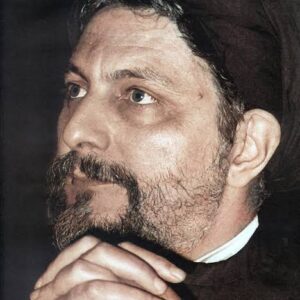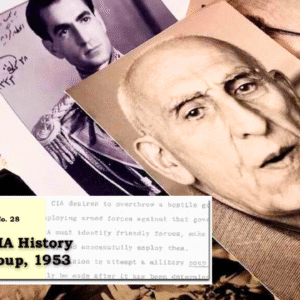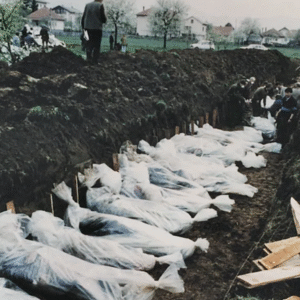All About Palestine IV: Arab-Israeli Wars and the PLO
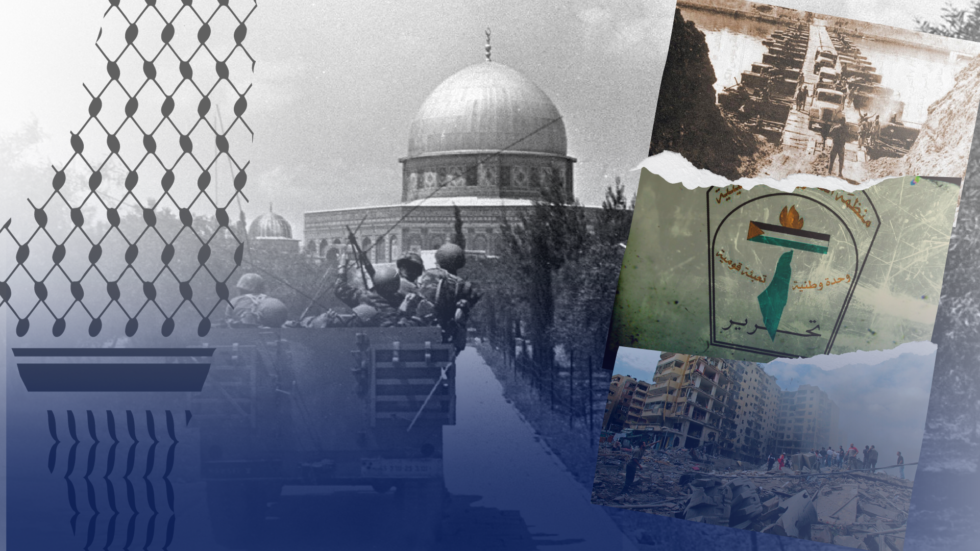
All About Palestine IV: Arab-Israeli Wars and the PLO
Palestine. What was once a thriving, culturally, and religiously diverse land, now lies under the military occupation of a racist, colonial regime. In the early 1900’s, ‘Imperialism’ and ‘Zionism’ merged together in perhaps the greatest conspiracy in human history: to uproot a nation and establish a military outpost in the form of a settler-colony on the shores of West Asia, to serve the British Empire’s interests in the region.
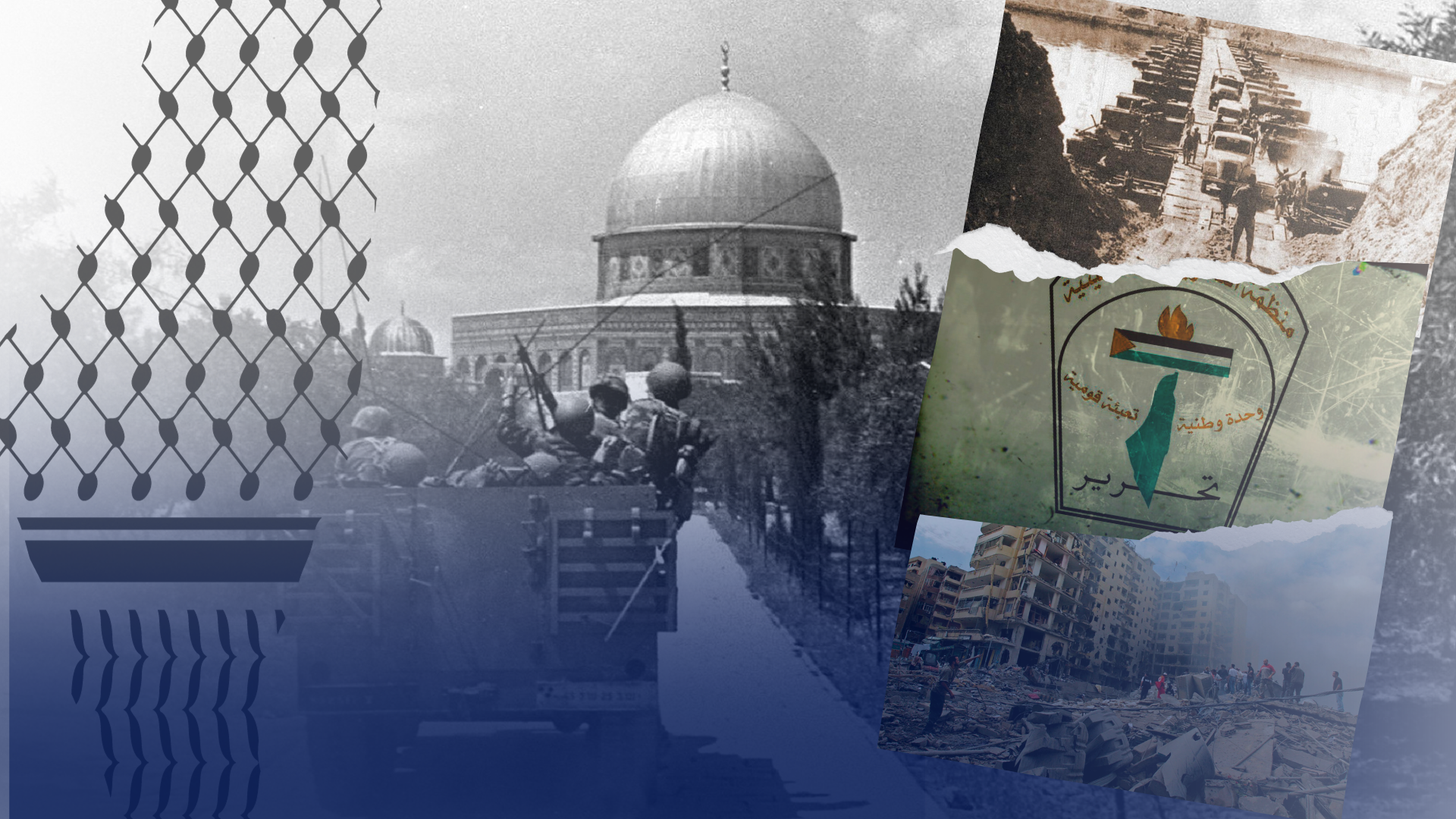
All About Palestine IV: Arab-Israeli Wars and the PLO
Palestine. What was once a thriving, culturally, and religiously diverse land, now lies under the military occupation of a racist, colonial regime. In the early 1900’s, ‘Imperialism’ and ‘Zionism’ merged together in perhaps the greatest conspiracy in human history: to uproot a nation and establish a military outpost in the form of a settler-colony on the shores of West Asia, to serve the British Empire’s interests in the region.
Written by: Nadia Hojaij and Yahia Hassani | Copy Editors: Zainabrights | Design: Fatima El-Zein
1956 Suez Crisis
After the UN Partition proposal and subsequent Zionist invasion, the Nakba and first Arab-Israeli War, the Zionist entity had usurped nearly 78% of historic Palestine and declared the Israeli State. The remaining 22% were divided between Gaza and the West Bank, controlled by Egypt and Jordan respectively as caretakers. The proposed Palestinian Arab State was never established.
US President Harry Truman was the first world leader to recognize Israel as an independent state, only eleven minutes after its creation on May 14, 1948. With the backing of US and UK world powers, the Israeli entity was able to maintain control over its illegal territories. By 1949, the Arab League and Israel had reached a ceasefire in the armistice agreements known as the “The Green Line,” which was meant to be temporary until replaced by permanent peace treaties.
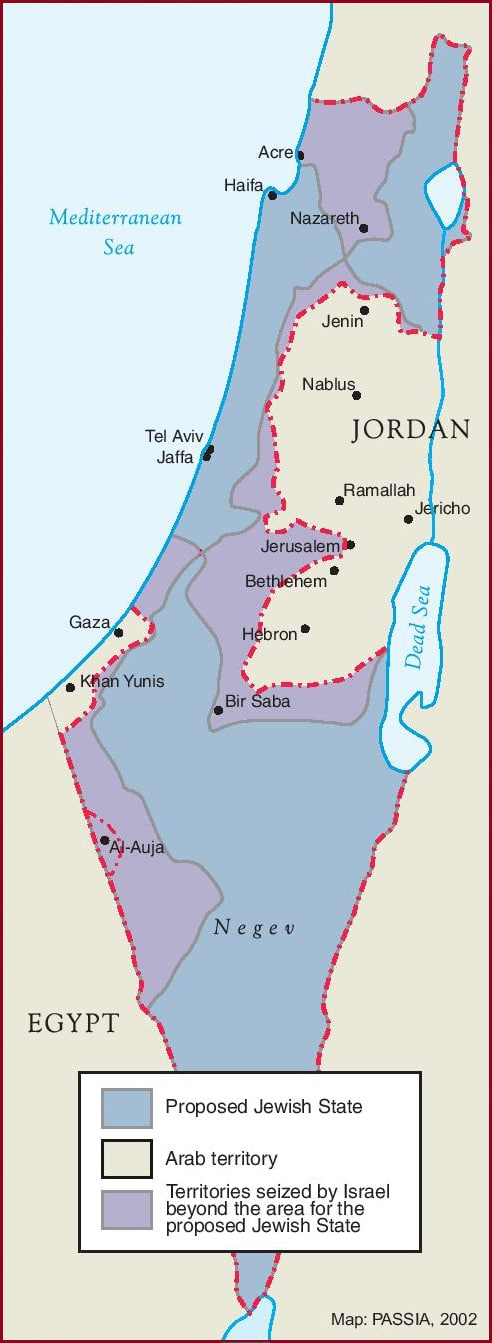
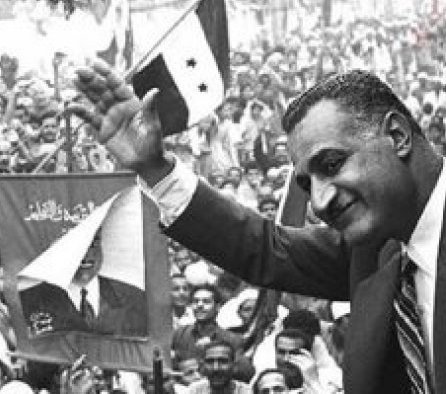
However, tensions mounted in October of 1956 during the Suez Crisis, considered to be the second Arab-Israeli War. Egypt had been pressuring Britain to end their colonial-era military presence near the canal. Egyptian President Gamal Abdel Nasser decided to nationalize the Suez Canal in order to raise funds for a new dam project on the Nile, an act well within Egypt’s sovereignty. Angered by the move, the British and French sought Israel for an armed assault to take the canal.
Israel invaded the Egyptian Sinai Peninsula in concert with Britain and France. After a few days, the attack was brought to a halt under US and Soviet pressure to avoid a wider escalation, in a pivotal event between the Cold War superpowers. The US forced Israel, Britain and France to withdraw and accept a UN brokered cease-fire. About 3,500 Egyptian forces were killed, with about 230 on the Israeli side. Israel did not gain the right to utilize the canal by Egypt, but was permitted to ship goods through the Straits of Tiran. President Abdel Nasser was hailed as a hero who was unequivocal in his support of Palestine. He played a pivotal role in the Arab Nationalist Movement and sought to unite Arab countries and promote their independence from Western powers.
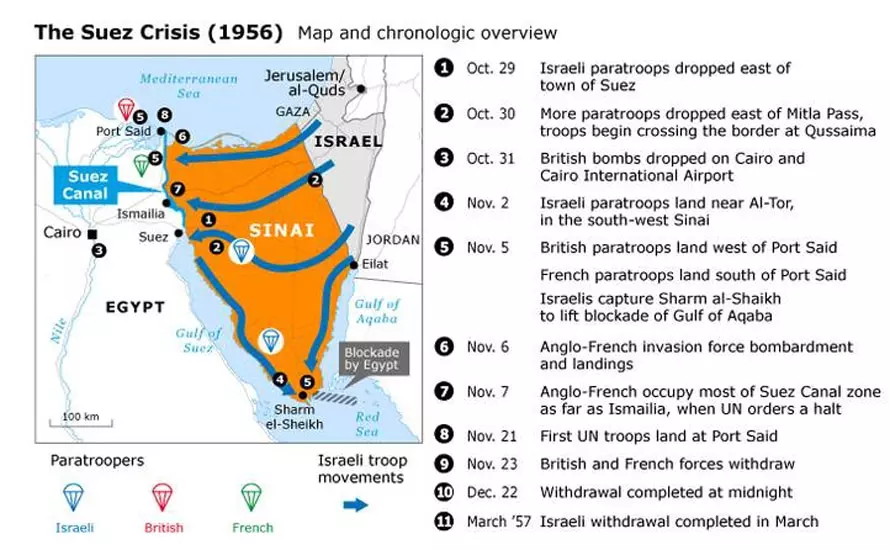
PLO
In 1964, as Palestinians suffered under Israeli occupation, they took it upon themselves to create the Palestine Liberation Organization (PLO). It was established in order to centralize the different Palestinian resistance groups that came into being after 1948, including Fatah, PFLP, DFLP, and al-Saiqah. The goal of the organization was to liberate Palestine, and to advocate for the Palestinian right to self-determination. It was established as an umbrella organization for various Palestinian factions including political parties, labor unions, and student organizations. The PLO created divisions that offered assistance in education, health, and relief services for Palestinians. They also created a semi-governmental structure with its own security forces, information bureaus and foreign policy.
1967 Six-Day War
An era of relative calm prevailed in the late 1950’s and early 1960’s. However, tensions remained high due to the Israeli aggressions and hostilities towards its Arab neighbors, as well as its mere presence as a settler-colonial project in the region. Tensions continued to escalate due to the Palestinian refugee crisis and a series of border disputes. In 1966, Israel attacked the Jordanian administered West Bank town of Al Samu, destroying dozens of homes, killing 18 Palestinians, and wounding over a hundred. Meanwhile, native Palestinian guerrilla groups continued to engage in their internationally recognized right to armed resistance against colonization.
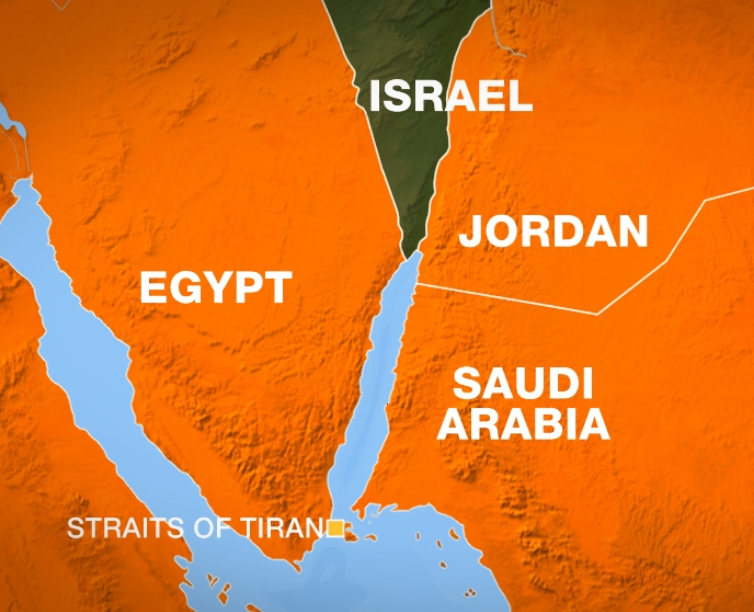
Tensions between Syria and Israel were also brewing over disagreements on the use of the Jordan River and Israeli cultivation along the border. In early 1967, Israel and Syria fought a ferocious air battle in which six Syrian fighter jets were destroyed. Egypt received Soviet intel that Israel was assembling its troops to invade Syria. Due to a 1955 Egypt-Syria defense treaty that obliged the two countries to support one another, Egypt began assembling troops in Sinai. In a show of support for his Arab neighbors and the Palestinian struggle, President Abdel Nasser blocked Israeli shipping through Egypts Straits of Tiran in the Red Sea, which constitute Egyptian territorial waters and were legally justified. Egypt also signed a defense pact with Jordan.
The situation in the region had reached a boiling point. On June 5, 1967, Israel launched surprise pre-emptive air assaults on Egypt, destroying more than 90% of its air force, followed by Syria and Jordan, destroying their air forces as well. In what became known as the third Arab-Israeli war, or Six-Day War, Israeli forces captured the Sinai Peninsula and Gaza Strip from Egypt, the West Bank including East Jerusalem from Jordan, and the Golan Heights from Syria. Before a UN brokered ceasefire ended the war, about 20,000 Arabs and 800 Israelis were killed in just 132 hours of fighting. About 100,000 Syrians were forcibly expelled from the Golan.
UN Resolution 242 was later passed in November 1967 calling on Israel to withdraw from the newly occupied territories in exchange for peace. However, this was not implemented by Israel which continued its illegal occupation. The status of these newly occupied territories continues to be a contentious topic in Arab-Israeli peace negotiations.
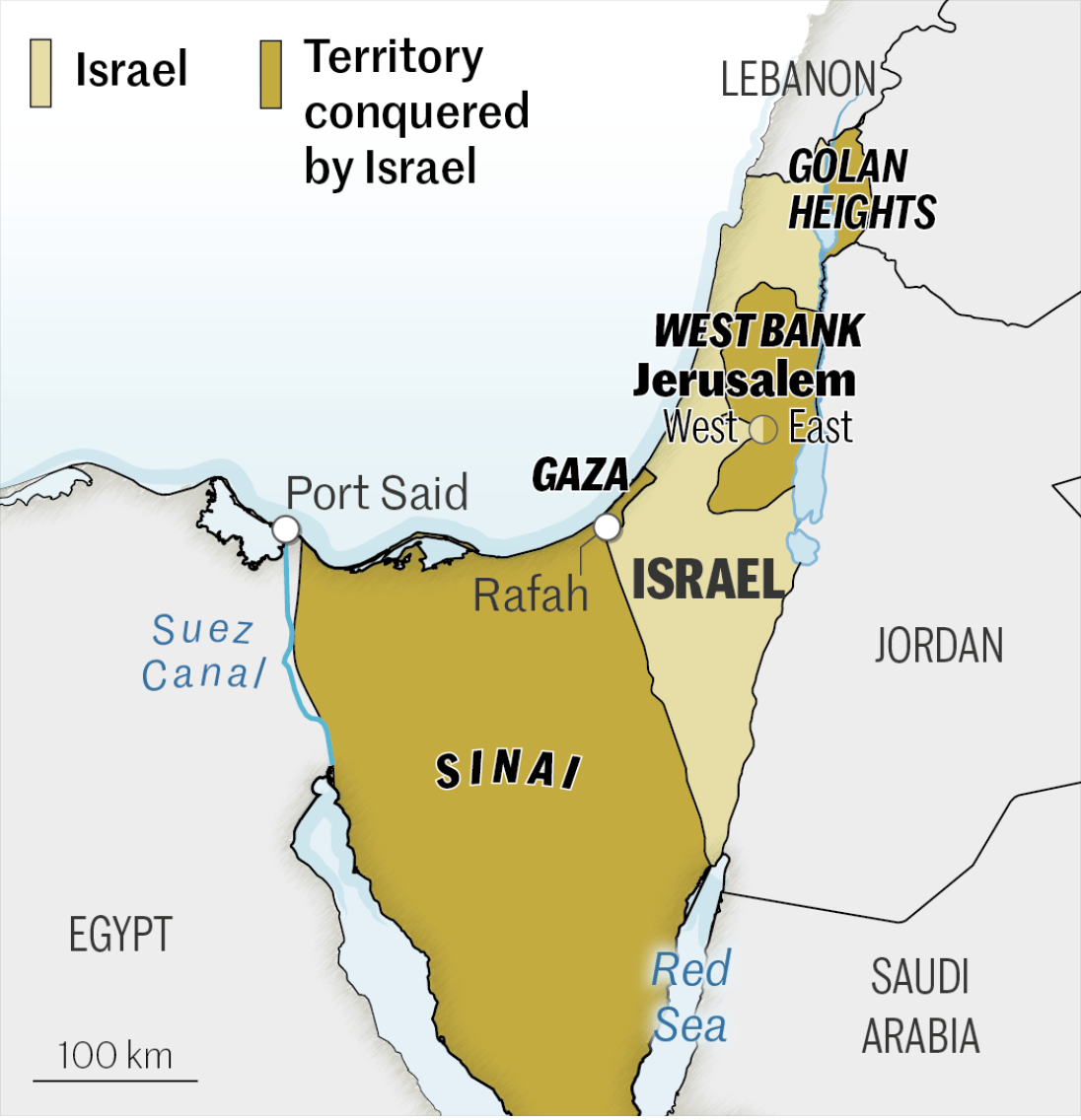
In a compelling twist, during the Six-Day War, Israel attacked the USS Liberty, an American intelligence ship off Egypt’s Gaza Strip. Israel claimed they mistakened the well-marked American vessel as an Egyptian ship. However, many of the survivors believed it was deliberate to conceal the pending annexation of the Syrian Golan Heights that occurred the very next day.
Of the 294 crew members on board, 34 Americans were killed and 171 injured. Investigations later discovered that the ship’s listening devices overheard Israeli military communications plotting the attack. Survivors of the USS Liberty continue to demand answers until the present day.
By seizing Gaza and the West Bank, Israeli forces had now usurped the entirety of historic Palestine, absorbing over one million Palestinians into the occupation. Around 350,000 Palestinians were forcibly expelled, most for the second time, exacerbating an already existing refugee crisis. The event became known as the “Naksa,” or setback. Israel immediately annexed East Jerusalem and put it under Israeli law, in a move not recognized by the international community, while the remainder of the West Bank and Gaza were put under illegal Israeli occupation and military rule. In response, the PLO started to ramp up its presence, no longer able to count on regular Arab armies to help the Palestinian plight or yield positive results. In 1969, Yasser Arafat was elected chairman of the PLO and held the position until his death in 2004.
He was the military leader of the Fatah party which was the largest faction in the PLO. Arafat was a charismatic leader known for his revolutionary rhetoric and his trademark black and white keffiyeh. He was a key figure in the PLO’s shift in primarily diplomatic organization to one that embraced armed struggle.
Arafat understood that non-violent resistance could not be achieved while living under state-sanctioned violence and systemic oppression. He believed oppressed people had the right to defend themselves against their oppressors, as under international law, occupied people have a right to armed resistance against colonial occupation.
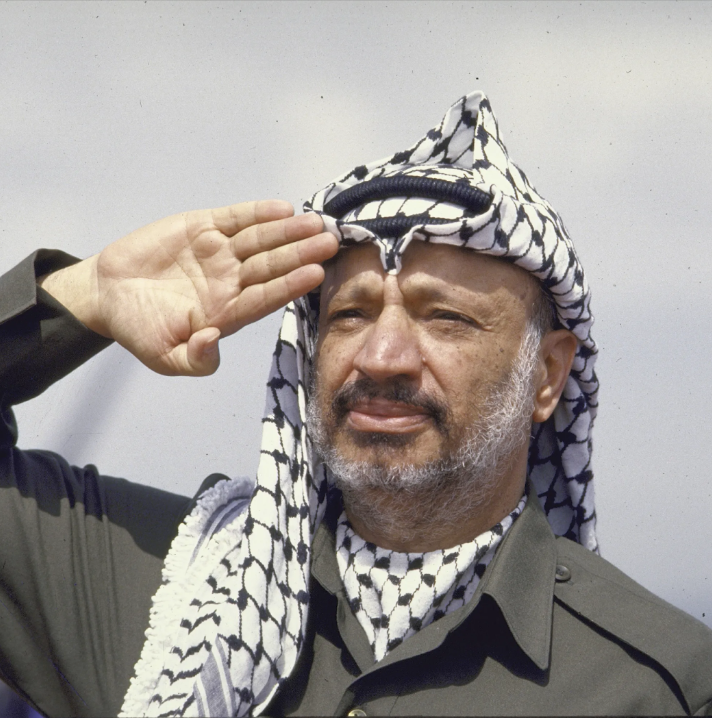
The PLO launched resistance operations against Israeli forces from its bases in Jordan, which along with economic losses due to the war, created a hostile situation for the Hashemite Kingdom. In efforts to preserve its throne, Jordan began secret negotiations with Israel over the disposition of the West Bank and East Jerusalem. Although it had not yet made an official peace treaty, Jordan cooperated with Israel over a wide range of issues and worked together against the PLO. In 1971, Jordan expelled the PLO, in the events known as Black September, which forced the PLO to relocate its headquarters to Lebanon. In 1974, the Arab League recognized the PLO as the “sole legitimate representative of the Palestinian people,” and granted it full membership. Arafat became the first non-state leader to address the UN General Assembly.
1973 Yom Kippur War
Egypt and Syria continued to grow in frustration over Israel’s unwillingness to withdraw from the occupied territories in accordance with UN Resolution 242. Egypts new President Anwar Sadat made several attempts to reach peace if Israel returned the Sinai peninsula, which Israel rejected. On October 6, 1973, tensions erupted with Egypt and Syria launching a surprise attack on Israel, known as the Yom Kippur War, or the fourth Arab-Israeli War. Egyptian forces managed to cross the Suez Canal while Syrian forces, led by President Hafiz al-Assad, broke through the Golan Heights, inflicting heavy damage on the Zionist entity. However, with US reinforcement, Israeli forces were able to maintain superiority. On October 25, an unexpected Egyptian-Israeli cease-fire was secured by the UN, which left Syria exposed to a military defeat and Israel seizing even more of the Golan Heights. All sides suffered heavy losses leading to the deaths of about 15,000 Egyptians, 3,500 Syrians, and 2,680 Israelis.
In 1974, Sadat started a political peace process between Egypt and Israel, which included re-opening the Suez Canal to Israel. In 1979, negotiations brokered by US President Jimmy Carter, known as the Camp David Accords, led to the return of the Sinai back to Egypt in return for normalizing relations with Israel. In the few short years that Israel had occupied the Sinai, it had already created illegal Israeli settlements, which Israel was forced to evacuate and relocate the thousands of settlers. Egypt became the first Arab country to recognize the Israeli colonization of Palestine as an official state, which was seen as a major betrayal to the Arab nations, Egyptian people, and the Palestinian struggle. Egypt was expelled from the Arab League and the disgraced Sadat would later be assassinated.
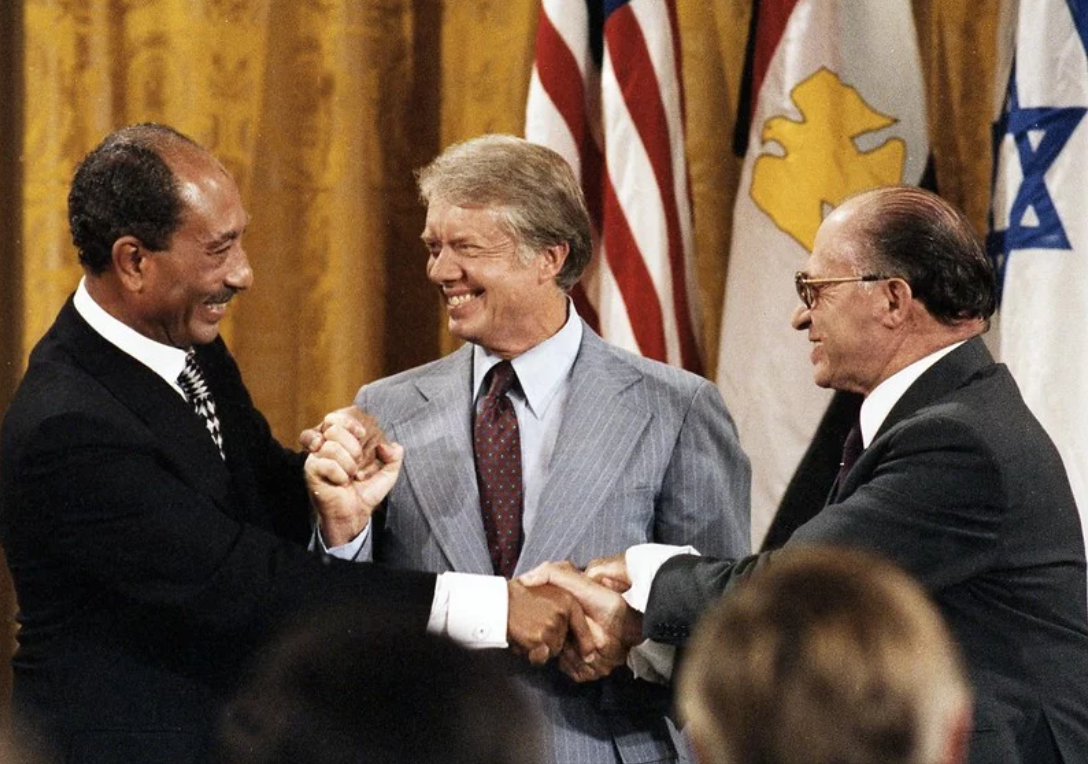
With Egypt and Jordan exiting the arena for Palestinian liberation, a new regional power entered in 1979 with the Islamic Revolution in Iran. Iran ousted the US-Israeli allied Shah monarchy and severed all diplomatic relations with Israel. Iran transformed the Israeli embassy in Tehran to a Palestinian embassy, believing the struggle for liberation against Zionism was one of divine principles and not Arab nationalism alone.
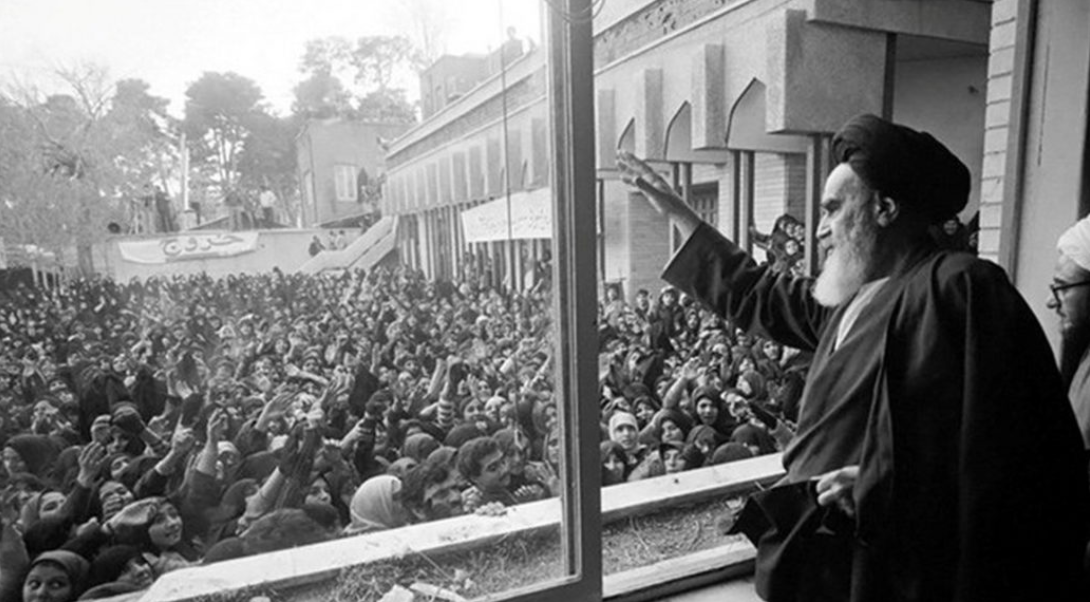
Syria continued to maintain a policy against normalization with the Zionist entity till today. In 1981, Israel unilaterally annexed the Golan Heights, in violation of international law, and an act not recognized by the UN nor the international community. Syria faces frequent Israeli military aggressions due to its unwavering stance against the Israeli colonization, occupations, and annexations in the region. Syria recently survived the decade-long NATO-Gulf backed regime-change civil war in Syria.
In 2019, the Trump administration recognized Israel’s sovereignty over the Golan Heights, making the US the only country in the world to do so.
Greater Israel
“Greater Israel” is the notion to expand Israel’s territory and sovereignty to what Zionists believe is their historic Biblical land. For some Zionists, it could mean the entirety of Palestine, while for others, including Zionism founder Theodore Herzl, it means from the Nile River in Egypt to the Euphrates River in Iraq.
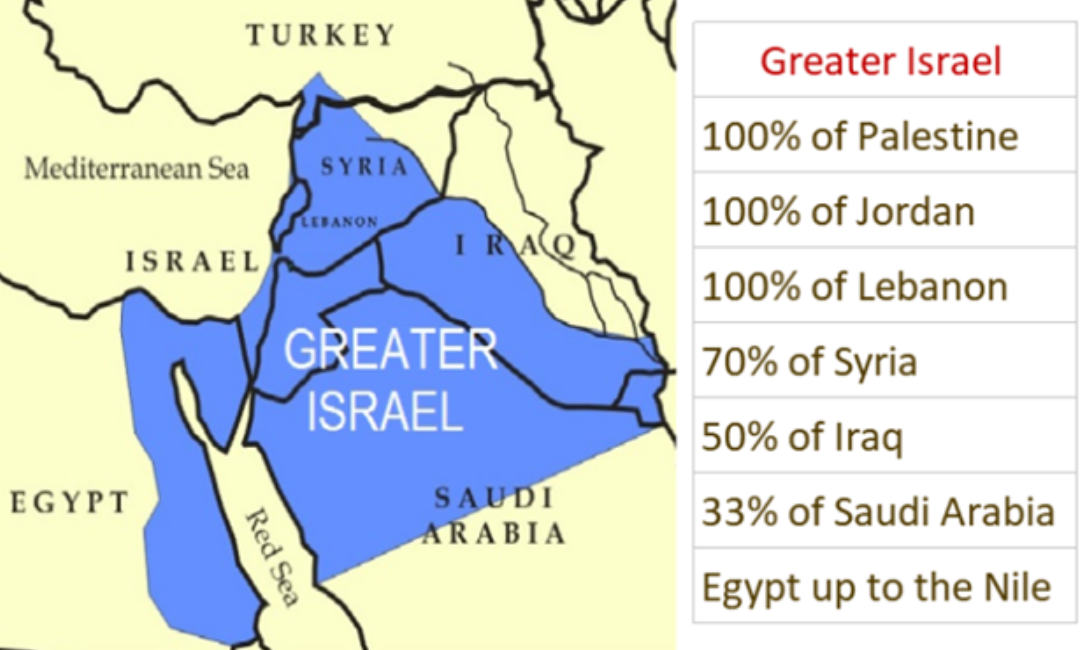
In his Complete Diaries, Vol. II. p. 711, Theodore Herzl, the founder of Zionism, says that the area of the Jewish State stretches: “From the Brook of Egypt to the Euphrates.”
In 1947, Rabbi Fischmann, member of the Jewish Agency for Palestine, declared in his testimony to the U.N. Special Committee of Enquiry: “The Promised Land extends from the River of Egypt up to the Euphrates, it includes parts of Syria and Lebanon.”
In 2023, Israeli Finance Minister Bezalel Smotrich was summoned by Jordan after giving a speech in Paris depicting a map of “Greater Israel” which included annexing parts of Lebanon, Syria, all of Palestine and the entirety of Jordan.
In 2023, Israeli PM Netanyaho came under fire for presenting a map of “The New Middle East” to the UN which depicted Israel over the entirety of Palestine.
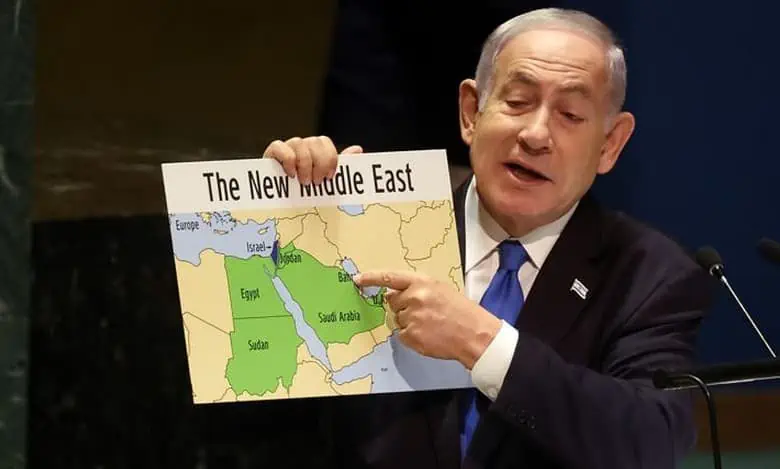
Israeli Occupation of Lebanon 1982-2000
In 1975, after years of growing insecurity leading to a deteriorating Lebanese state, along with regional instability, the Palestinian refugee crisis, and presence of the PLO, Lebanon erupted into civil war. Battles were generalized between two main camps: The Lebanese Front led by right-wing Christian Phalangists whose leaders dominated the state’s elite class and socio-political fabric, and the Lebanese National Movement made up of secular leftists and Muslims who supported the Palestinian struggle.
With the Lebanese Army fragmented, Syria intervened throughout the war at the request of Lebanese President Frangieh, to prevent Lebanon from disintegrating into multiple militia states. The PLO continued to engage in armed resistance against the Israeli occupation from their bases in Lebanon. In 1978, with Egypt and Jordan no longer a threat, Israeli forces invaded Lebanon up to the Litani river with the goal to destroy PLO bases and drive PLO fighters further from the border.
An estimated 1,000 Palestinian and Lebanese were killed, prompting UN Resolution 425 calling for cease-fire and Israeli withdrawal.
Before withdrawing, Israel established the South Lebanese Army as a proxy militia to function on its behalf. On June 6, 1982, Israel launched a full scale invasion of Lebanon, with 76,000 troops and over 1,000 tanks. Although their stated goal was to secure territory near its border, Israeli occupation forces advanced to Beirut and laid siege on the capitol.
The Israeli invasion and bombardment of Lebanon was catastrophic on the war-torn country and further exacerbated the bloody civil war. By the end of August alone, over 17,000 Lebanese and Palestinians were killed due to the invasion, with over 30,000 wounded.
Beirut based Palestinian writer, Jean Said Makdisi, recalls Israel’s vacuum bombs pulverizing eight story residential buildings along with everyone in it.
She describes “The sky orange with the unnatural light of exploding phosphorus bombs, the whizzing screams of jets darting for the kill…It was as though the Israelis had achieved a paroxysm of violent hatred, a lunatic, destructive urge to kill, to leave nothing standing, to eradicate the city.”
By September 1, 1982, the PLO was driven out of Lebanon and forced to relocate to Tunisia. However, Israeli forces remained in Lebanon to expand their occupation of the Levant. Israel supported their right-wing Phalange allies in the civil war, committing many atrocities including the infamous Sabra and Shatila Massacre. On September 16, 1982, Israeli occupation forces allowed entry of Phalange militias into the Palestinian refugee camps, which mostly consisted of women and children since most of the men had just been expelled to Tunisia. Under supervision and protection from Israeli forces, the militias killed more than 3,500 unarmed Palestinian refugees and Lebanese civilians, in supposed retaliation for the assassination of newly elected Phalange President Bashir Gemayel a few days prior which later revealed neither were responsible for his death.
Testimonies described horrific acts of slaughter, mutilation, rape and mass graves. Images from the aftermath were aired on television causing global outrage, forcing Israeli Defense Minister Ariel Sharon to resign. However, the Israeli entity continued its occupation of Lebanon, which was widely criticized by the international community and subject to numerous investigations into war crimes and human rights abuses. The Israeli occupation galvanized Lebanese natives to mobilize and form armed resistance groups to expel the “Greater Israel” project. In 1982, the Islamic resistance group Hezbollah emerged – inspired by the Islamic Revolution in Iran.
Thus began the era of Lebanese resistance against the Israeli occupation. In 1985, Israeli troops were forced to retreat to southern Lebanon, where they established military bases, checkpoints, spy networks, and detention centers including the infamous Khiam Prison, where thousands were detained and tortured in the most horrific ways.
By 1990, the civil war had come to an end after the Taif Accords and Syrian intervention. However, the Israeli occupation remained. For years, Hezbollah would continue to engage in armed resistance against the Israeli occupation.Israeli forces launched many military campaigns, operations, air raids, and assassinations in attempts to squash the resistance, but were unsuccessful.
Israel committed many atrocities in Lebanon, including the 1996 Qana Massacre, when they shelled a UN compound housing hundreds of Lebanese civilians seeking shelter, killing 106 people, half of which were children. This sparked massive protests internationally as well as condemnation from many foreign leaders for Israel’s deliberate and continued indiscriminate attacks on Lebanese civilians.
After 18 years of Lebanese resistance, the Israeli occupation was finally expelled from Lebanon on May 25, 2000. This was seen as a huge victory for the Arab people and a source of inspiration for the Palestinian struggle for liberation. It was also seen as a humiliating defeat for the Israeli entity, as for the first time in its history, it was forced to unilaterally withdraw from its occupation without any concessions.
Israel tried to invade and re-occupy Lebanon once again in 2006 during the 33 Day War, but failed and was defeated again.
It is reported that Israeli warplanes indiscriminately launched over 7,000 airstrikes on Lebanon, killing over 1200 people, mostly civilians. Meanwhile, 120 Israeli soldiers were killed and roughly 40 settlers in the month-long war.
In Lebanon, Israel continues to be a constitutional enemy due to its history of invasions, aggressions and violations of Lebanon’s sovereignty. Tensions remain high with sporadic fighting near the border, most notably during the 2023 Israeli War on Gaza.
The piece you just read is a part of a larger report on Palestine. Each day we will delve into a different aspect.
SOURCES
- What Price Israel, Alfred Lilienthal, Pages 148-150
If you value our journalism…
TMJ News is committed to remaining an independent, reader-funded news platform. A small donation from our valuable readers like you keeps us running so that we can keep our reporting open to all! We’ve launched a fundraising campaign to raise the $10,000 we need to meet our publishing costs this year, and it’d mean the world to us if you’d make a monthly or one-time donation to help. If you value what we publish and agree that our world needs alternative voices like ours in the media, please give what you can today.
Related
47 Years After His Disappearance, Imam Musa Sadr’s Legacy of Unity, Dignity, and Resistance Lives On
August 31st, 2025 marked the 47th anniversary of the disappearance of revolutionary Islamic scholar Imam…

